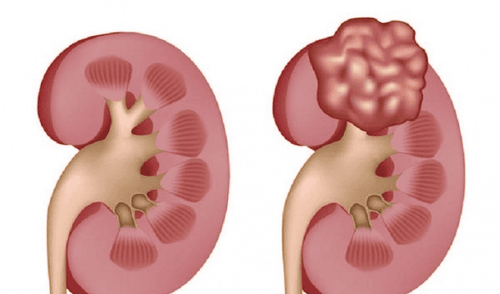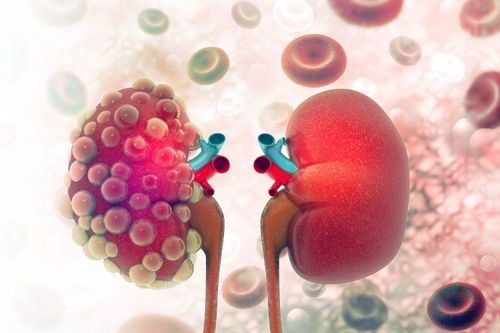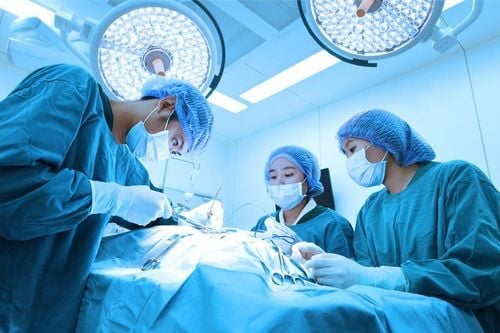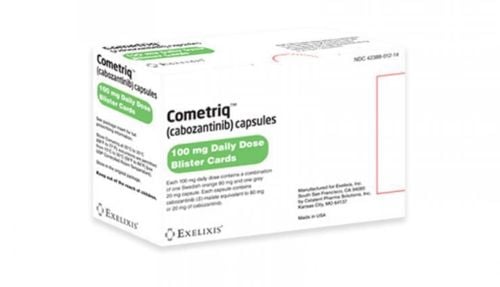This is an automatically translated article.
The article was professionally consulted with Master, Doctor Le Phuc Lien - Urologist - Department of General Surgery - Vinmec Central Park International General Hospital.Laparoscopic nephrectomy is a safe procedure that allows the removal of part or all of a damaged or cancerous kidney without the need for open surgery. However, this method still exists a small rate of complications after surgery.
1. What is Laparoscopic Nephrectomy?
Laparoscopic nephrectomy is the removal of part of a damaged or cancerous kidney. When performing, the surgeon makes 3 small incisions with a diameter of 1 - 1.5cm on the abdomen/back while the patient is under general anesthesia. Then, high-precision medical instruments are inserted into the abdomen for these small incisions. Under the guidance of ultrasound images, the doctor will remove the damaged part of the kidney from the patient's body.With its non-invasive nature, laparoscopic nephrectomy is being widely applied in the treatment of many diseases such as cancer, nephrectomy, and kidney transplantation. There are many conditions to consider before using laparoscopic nephrectomy including: age, general health, overall kidney function, number of tumors, and patient preference. The advantages of this method are less invasive, less painful, faster recovery than conventional open surgery.
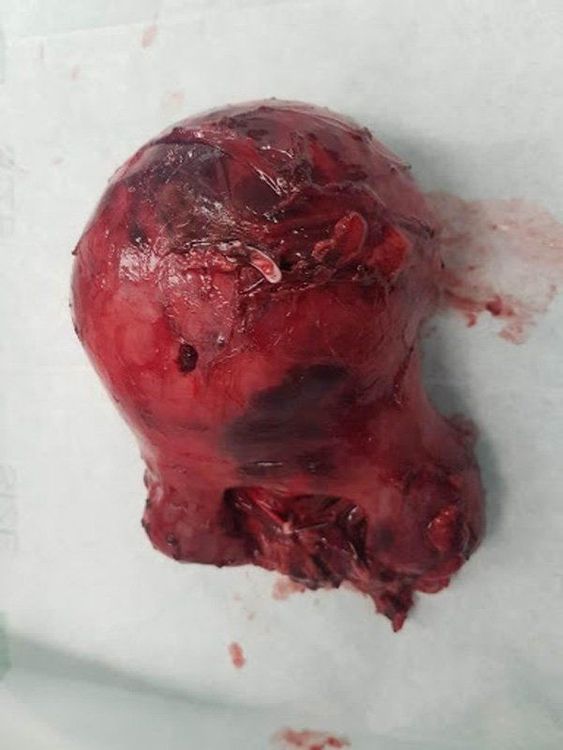
Hình ảnh thận được cắt bỏ do ung thư
2. Indications for endoscopic nephrectomy
2.1 Treatment of malignant diseases Extensive nephrectomy in the treatment of kidney cancer: is the leading indication for laparoscopic nephrectomy technique. Contraindicated for coagulation dysfunction, severe cardiopulmonary disease, abdominal wall infection, inferior vena cava thrombosis, lymph node metastasis, cancer invading adjacent organs. Relative contraindications for large tumor sizes. Be careful in cases of old intra-abdominal surgery and obesity;Partial nephrectomy in the treatment of kidney cancer: Indicated for small, superficial or peripheral renal tumors. Contraindicated for cases of deep tumor invading the renal hilum, tumor located in the middle of the kidney, tumor associated with renal vein thrombosis, patients with coagulopathy and a history of previous kidney surgery. Renal pedicle clamping (arterial control) is contraindicated in moderate and severe cases of azotemia. Be careful with cases of obesity;
Nephrectomy and ureterectomy in upper urothelial carcinoma: Indications for ipsilateral nephrectomy and ureterectomy for epithelial tumors of the urinary tract and renal pelvis.

Ung thư biểu mô đường niệu đạo
3. Contraindications for laparoscopic nephrectomy
Nephrectomy due to kidney stones: Relative contraindications; History of previous abdominal surgery: Patients with a history of previous abdominal surgery may cause intra-abdominal adhesions, making laparoscopic surgery difficult. These are relative contraindications; Obesity: Making it difficult for the surgeon. These are relative contraindications; Intestinal obstruction and paralytic ileus: Increases the risk of intestinal injury during surgery because of the reduced working space in laparoscopic surgery; Coagulation dysfunction: An absolute contraindication; Untreated infections: Infections of the abdominal wall near the surgical site, if not treated stably, are the cause of bacteria entering the body, causing post-operative infection; Having nephritis - pyelonephritis and renal tuberculosis can cause severe perirenal adhesions, increasing the risk of complications in laparoscopic surgery, so open surgery should be prioritized; Cardiovascular or severe lung disease: May put patients at risk for complications from intra-abdominal inflation.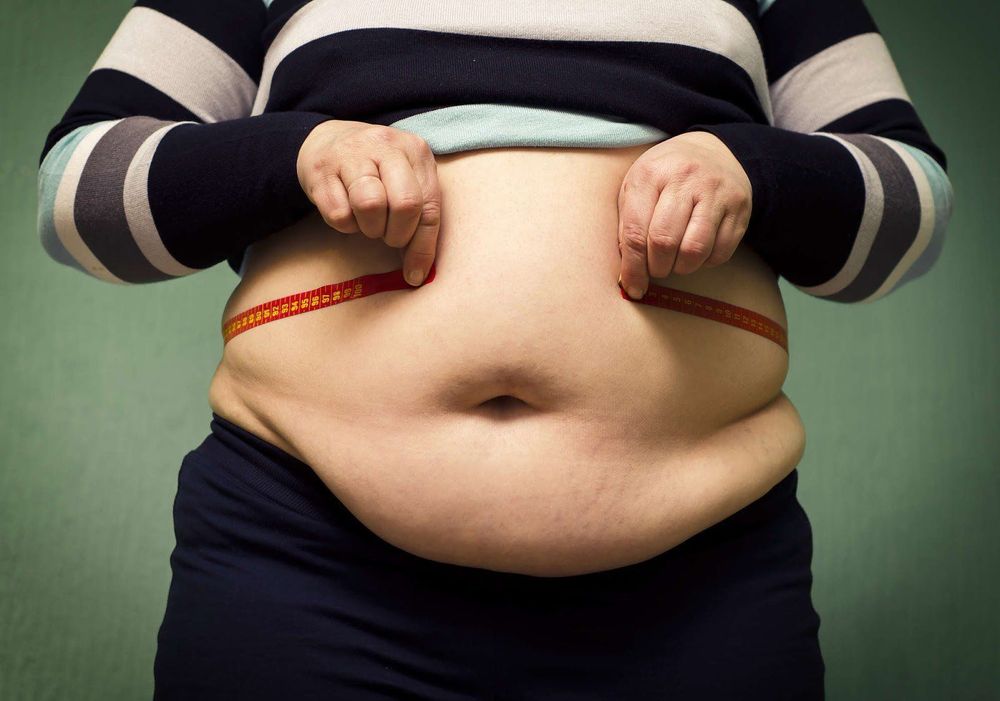
Người mắc bệnh béo phì thuộc nhóm đối tượng chống chỉ định phẫu thuật nội soi cắt thận
4. Perform laparoscopic nephrectomy
4.1 Preparation Personnel: Experienced urologist and anesthesiologist; Facilities: Laparoscopic surgery system, ultrasound knife, trocar 5mm, 10mm, automatic clipping tools, clamps, endoscopic scissors, lifting tools,...; Patients: Tested to evaluate compensatory renal function, determine the pathological cause through tests: ultrasound, intravenous urogram, computed tomography (CT scan) of the urinary system, copper scan Radiation taste, renal angiography, ... In addition, the elderly, weak and exhausted patients will be improved before surgery. 4.2 Implementation Patient position: Tilt 75° for transperitoneal laparoscopic surgery; 90° tilt if retroperitoneal laparoscopic surgery; Anesthesia: The patient is under endotracheal anesthesia, urethral catheter is placed before surgery; Place trocar: Placement depends on transperitoneal laparoscopic surgery or retroperitoneal laparoscopic surgery; Create retroperitoneal space; Nephrectomy: The technique depends on laparoscopic transperitoneal surgery, retroperitoneal laparoscopic surgery or nephrectomy for transplantation.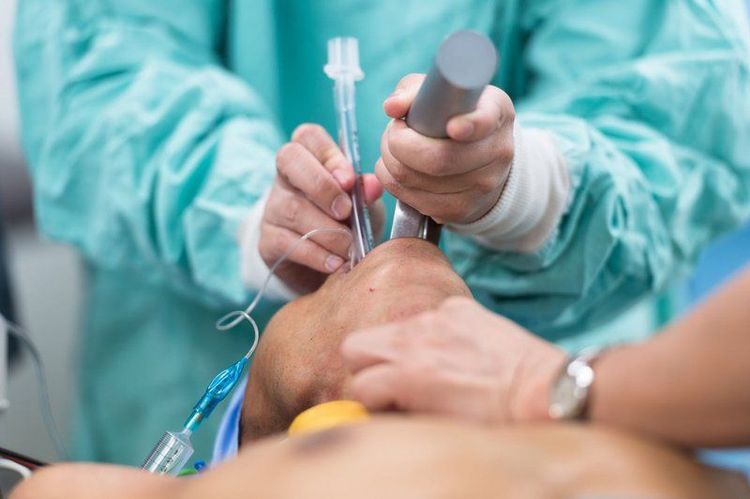
Kỹ thuật gây mê nội khí quản
5. Complications and how to manage during and after laparoscopic nephrectomy
5.1 Intraoperative complications Peritoneal tear (in patients with retroperitoneal laparoscopic nephrectomy) due to trocar or surgery: Treat by adding trocar to push the peritoneum or suture the torn peritoneum. In case of large peritoneal tear, which cannot be sutured, it is widened and converted to laparoscopic transperitoneal nephrectomy; Pleural tears, diaphragmatic perforation due to high trocar placement close to the costal margin or during surgery can be managed by endoscopic suturing of the pleura and diaphragm, combined with continuous suction pleural drainage. And if laparoscopic surgery cannot be continued, switch to open surgery; Bleeding due to damage to the inferior vena cava, genital veins: If not managed through laparoscopic surgery, it is recommended to switch to open surgery to stop bleeding; Injury to other organs such as duodenum, colon, ... due to trocar head, dissection or electrocautery should be converted to open surgery, treated according to the injury; Technical difficulties, abnormal vascular peduncles, perirenal adhesions, extensive lesions that cannot be operated through laparoscopic surgery should be converted to open surgery.
Chọc trocar sai cách có thể gây tai biến trong phẫu thuật nội soi
Recommended video:
Vinmec - Flexible endoscopic laser lithotripsy removes stones up to 2.5 cm
Please dial HOTLINE for more information or register for an appointment HERE. Download MyVinmec app to make appointments faster and to manage your bookings easily.




